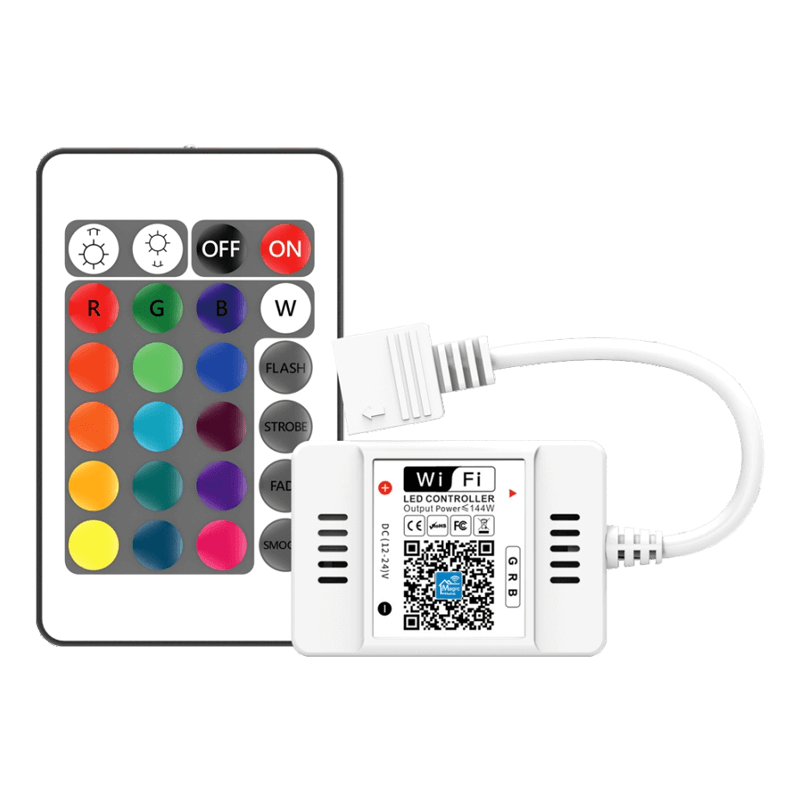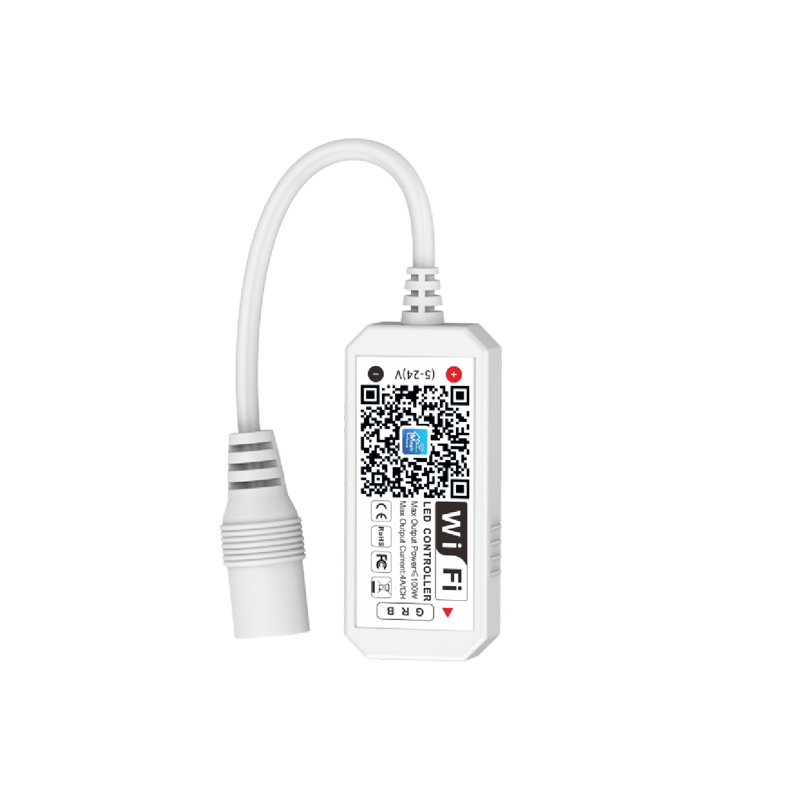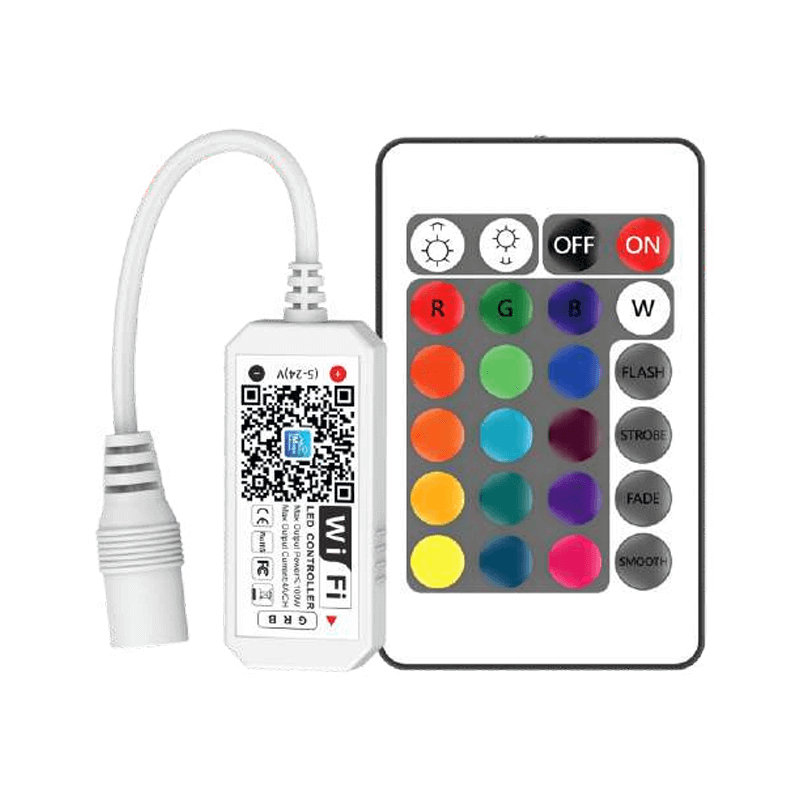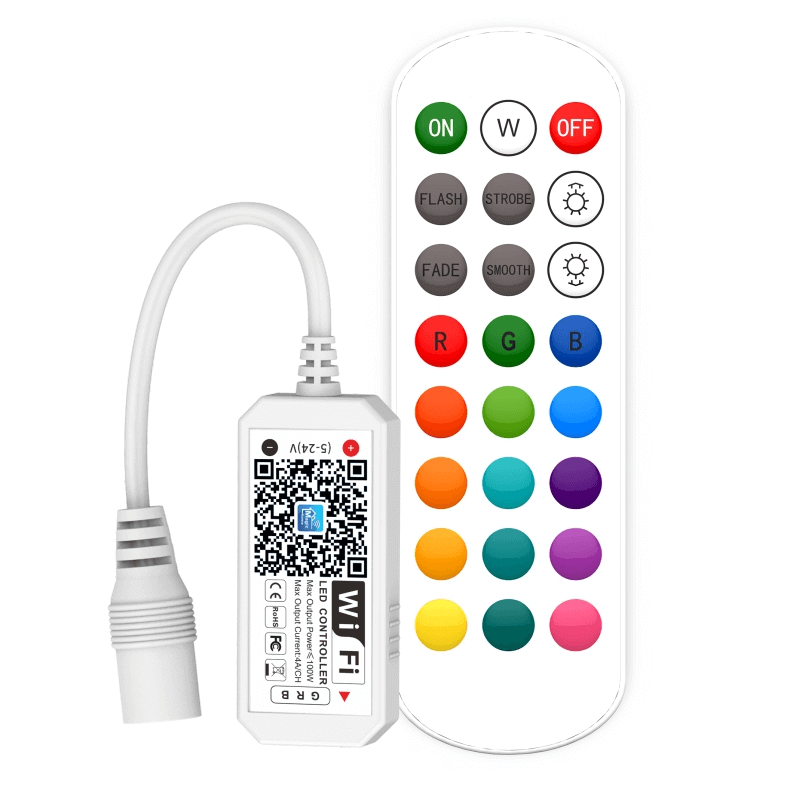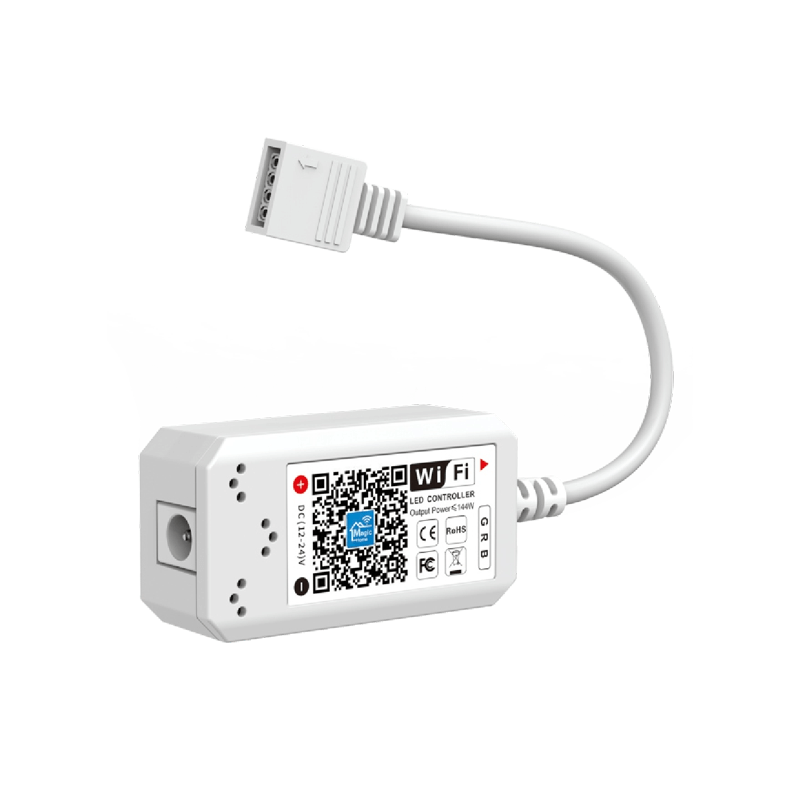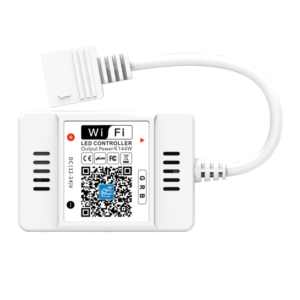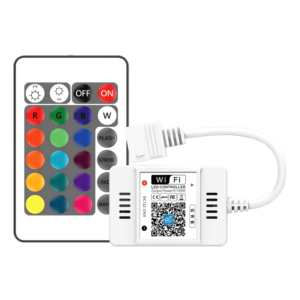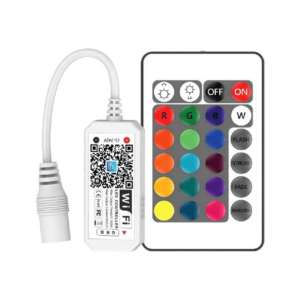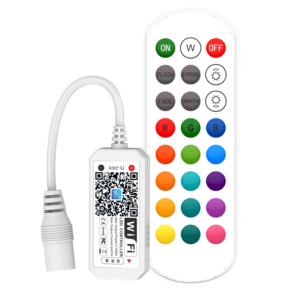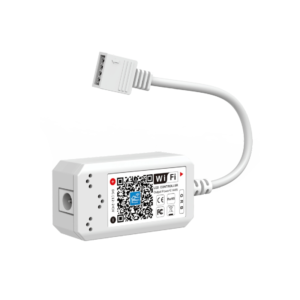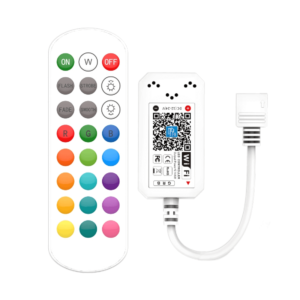
WiFi LED Controller Supplier & Manufacturer
WiFi LED controller is a device that allows you to control and manage your LED lights using a WiFi connection. With a WiFi LED controller, you can turn your lights on or off, dim or brighten them, change their color, and set schedules and scenes for them using a WiFi-enabled device such as a smartphone or tablet.
This allows you to customize your lighting to suit your preferences and needs and can help you save energy by automatically turning off lights when they are not needed. Some WiFi LED controllers are also compatible with other smart home devices, allowing you to integrate your lighting with your other home systems and create automated routines and scenes.
We manufacture high-quality LED light controllers. All of our products go through high-tech laboratories to ensure the utmost quality.
Magic Home WiFi RGB LED Controller
WiFi RGB LED Controller
Volt: 12V – 24V DC
Domination Principle: WiFi
Channels: RGB
RF WiFi LED Controller
Volt: 12V – 24V DC
Domination Principle: WiFi
Channels: RGB
Mini WiFi LED Controller
Volt: 5V – 24V DC
Domination Principle: WiFi
Channels: RGB
Mini RGB LED Controller
Volt: 5V – 24V DC
Domination Principle: WiFi
Channels: RGB
WiFi RGB Light Controller
Volt: 5V – 24V DC
Domination Principle: WiFi
Channels: RGB
12V LED controller
Volt: 12V – 24V DC
Domination Principle: WiFi
Channels: RGB
WiFi LED strip light controller
Volt: 12V – 24V DC
Domination Principle: WiFi
Channels: RGB
Advantages of WiFi LED controller
There are several potential advantages to using a wire LED controller to manage your LED lights. Some of the potential benefits of this type of controller include the following:
– Control your LED Strip lights remotely using a Magic Home App or a central hub, which can be convenient and allow you to easily adjust your lighting to suit your needs.
-Create custom lighting scenes and schedules, which can help you save energy by automatically turning off lights when they are not needed.
-Change the color and brightness of your LED lights, which can allow you to create a wide range of lighting effects and ambiances.
-Integrating your LED lights with other smart home devices allows you to create automated routines and scenes.
-Control your LED lights using voice commands if the controller is compatible with a virtual assistant such as Amazon Alexa or Google Assistant.
-Connecting to your LED lights over longer distances, typically within the range of your home WiFi network, which can be helpful if your LED lights are located in a large or multi-story home.
How to use WiFi LED controller
First, connect the controller to your home WiFi network to use a WiFi LED controller. This will typically involve installing the Magic Home App on your smartphone or tablet and following the instructions to connect the controller to your WiFi network.
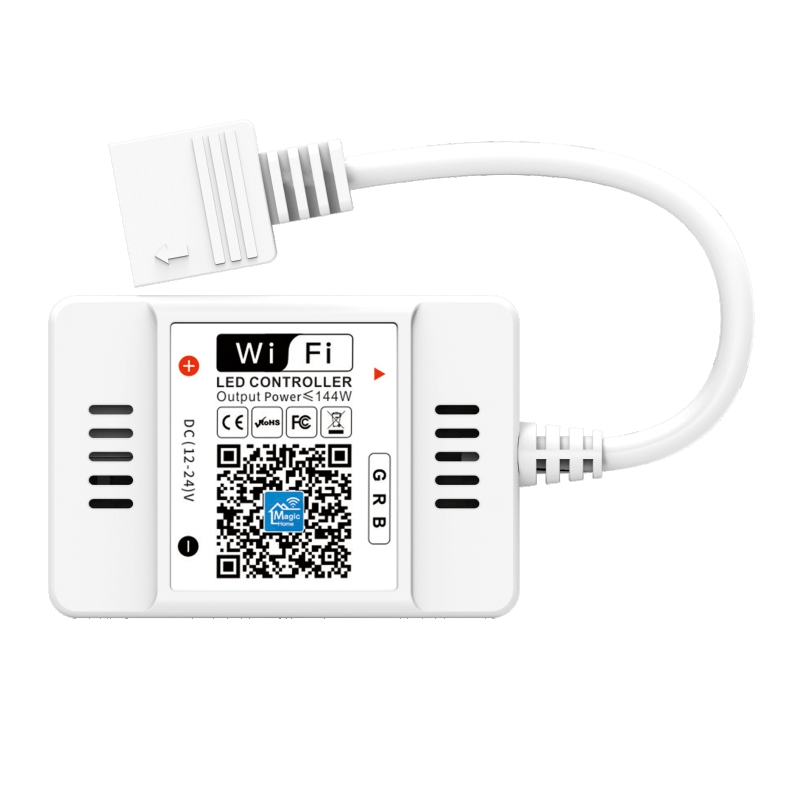
Once the RGB LED controller is connected to your WiFi network, you can use the Magic Home App to control and manage your LED lights. This will typically involve assigning each LED light a unique address and then setting the colors and brightness levels for each light to create your desired lighting effect.
Some Multi-zone RGB controllers also allow you to program and save custom lighting scenes, which can be activated by pushing a button.
Type of led controller
There are different types of LED controllers are designed to control and manage LED lights in different ways. Some of the common types of LED controllers include:
- WiFi LED controllers, which use a WiFi connection to allow you to control your LED lights using a smartphone app or a central hub.
- Bluetooth LED controllers, which use a Bluetooth connection to allow you to control your LED lights using a Bluetooth-enabled device such as a smartphone or tablet.
- DMX LED controllers use the DMX protocol to allow you to control and manage your LED lights in a professional lighting setup.
- Pixel LED controllers, which allow you to control individual LEDs on an addressable LED strip, allowing you to create custom lighting effects.
- DALI LED controllers, which use the DALI protocol to allow you to control and manage your LED lights in a professional lighting setup.
- 5-24V LED controllers use a 5-24V analog signal to control and dim your LED lights.
- RF LED controllers, use a radio frequency (RF) signal to control your LED lights wirelessly.
- Wall-mounted LED controllers, which are mounted directly on the wall and allow you to control your LED lights using physical buttons or switches.
Bluetooth LED Controller VS WiFi LED Controller
Bluetooth LED controllers and WiFi LED controllers are both devices that can be used to control LED lights wirelessly. However, there are some key differences between these two types of controllers.
One of the main differences between Bluetooth and WiFi LED controllers is their technology. Bluetooth LED controllers use Bluetooth technology, which has a relatively short range and can be affected by interference from other devices.
In contrast, WiFi light controllers use WiFi technology, which has a more extended range and is generally less susceptible to interference. This means that WiFi RGB LED controllers can be used to control LED lights in larger spaces and may be more reliable in environments with many other wireless devices.
Another difference between Bluetooth and WiFi LED controllers is their level of control. Bluetooth LED controllers are typically designed for simple and basic control of LED lights, such as changing their color and brightness.
WiFi LED controllers often have more advanced features, such as creating and saving lighting scenes or controlling multiple sets of LED lights at once. This makes WiFi LED strip controllers more versatile and flexible for controlling LED lighting.
Overall, the choice between a Bluetooth LED controller and a WiFi LED controller will depend on the user’s specific requirements. Bluetooth LED controllers are a good choice for basic control of LED lights in small spaces, while WiFi LED controllers are a better option for more advanced control and larger rooms.
Recommended Reading:
What is the best WiFi LED controller?
LED Light Controller WiFi Technology
WiFi LED light controllers are a new technology that allows users to control the brightness and color of LED lights from a distance using a wireless network. The controllers use a combination of radio frequency (RF) technology, WiFi, and a smartphone or other mobile device to control the LED lights in a home or business.
The controller unit is typically programmed to respond to specific commands from the mobile device. This allows users to control the intensity and color of the LED lights from a distance. The controller unit can also store user preferences, such as the preferred colors and brightness levels so that the user does not have to reset the settings every time they turn on the lights.
The controllers are becoming increasingly popular for both residential and commercial applications. In residential applications, the controllers can be used to create ambiance in a living room, bedroom, or other space. The controllers can also be used in commercial settings, such as retail stores, restaurants, and hotels, to create a unique lighting experience for customers.
The use of WiFi LED light controllers is growing as more people are recognizing the convenience and cost savings of using the technology. The controllers are relatively easy to install and require minimal maintenance. Additionally, the controllers can be combined with other smart home technologies, such as voice-activated assistants and security systems, to provide an even more comprehensive and automated experience.
Overall, WiFi LED light controllers are a great way to improve the lighting in a home or business and make it easier to control the lights from a distance. Technology is becoming increasingly popular as more people begin to realize its convenience and cost savings. The controllers are easy to install and require minimal maintenance, making them an attractive option for those looking to upgrade their lighting.
WiFi RGB LED controller features
- Wireless Control: The WiFi RGB LED controller allows users to control their LED lights from anywhere with a WiFi connection. This means users can adjust the brightness and color of their lights from their phones, tablets, or computers.
- Customizable Colors: With the WiFi RGB LED controller, users can select and customize their colors for their lighting. This makes it easy to create the perfect atmosphere for any occasion.
- Programmable Scenes: The WiFi RGB controller can create specific scenes for different times of the day. For example, users can set their lights to turn on and off at certain times or change to a certain color at a certain time.
- Smart Home Integration: The controller can be integrated with other smart home devices, allowing users to control their lights with voice commands or other connected devices.
- Scheduling Capabilities: With the WiFi RGB LED controller, users can easily set up schedules for their lights. This means users can program their lights to turn on and off at specific times, creating a sense of security when they are away.
- Energy Efficient: The WiFi RGB LED controller is designed to be energy efficient, helping users save money on their electricity bills.
- Easy to Use: The controller is designed with an easy-to-use interface, allowing users to control their lights with a few simple clicks.
- Durable Design: The WiFi RGB LED controller is durable and can withstand the wear and tear of everyday use.
- Multi-Zone Control: The controller can control multiple light zones, making it easy to create specific lighting effects in different areas.
- Remote Access: The controller can be accessed remotely, allowing users to control their lights even when they are away from home.
Recommended Reading:
Advanced Guide: Magic Home WiFi LED Controller
Difference between RGB and RGBW LED controller
RGB and RGBW LED strip controllers are devices used to control the colors and brightness of LED strips. The user can use both controllers to change the colors and brightness of the LED strips, but there are some key differences between the two.
RGB LED strip controllers are designed to control RGB LED strip lights that use red, green, and blue LED chips to create a wide range of colors. There are three channels of RGB LED controller, one for each color, and the user can adjust the intensity of each color independently to create a wide range of colors.
RGBW LED strip controllers are designed to control RGBW LED strips that use red, green, blue, and white LED chips. The addition of the white LED chips allows for more precise color control, a wider color gamut, and the ability to produce true white light. There are four channels of RGBW LED controllers, one for each color, and they allow users to adjust the intensity of each color independently to create a wide range of colors, including true white.
One of the key difference between RGB and RGBW LED strip controllers is the level of color the control they offer. RGBW controllers generally offer more precise color control and a wider range of colors, as they have an additional white LED chip that can be used to fine-tune the colors.
Another difference is the cost. RGBW LED strip controllers are generally more expensive than RGB controllers due to the additional hardware required to control the white LED chips.
Recommended Reading:
Is it worth getting RGB LED strip lights?

